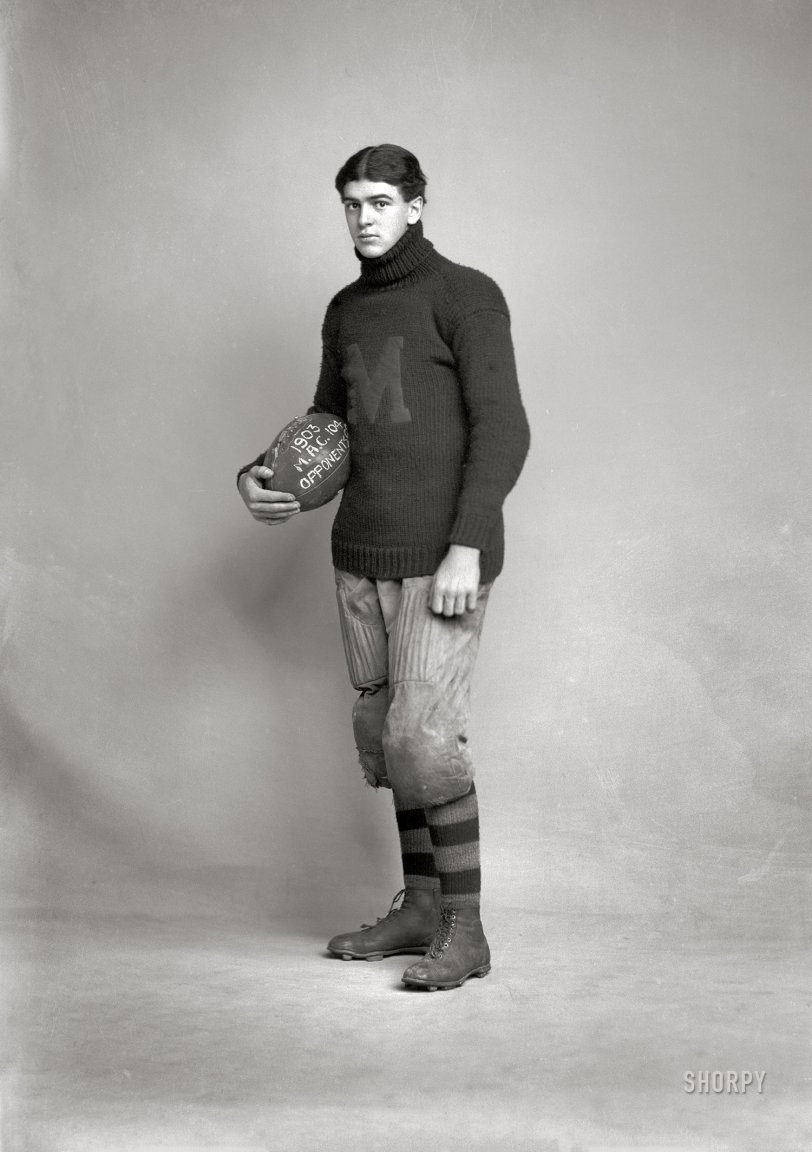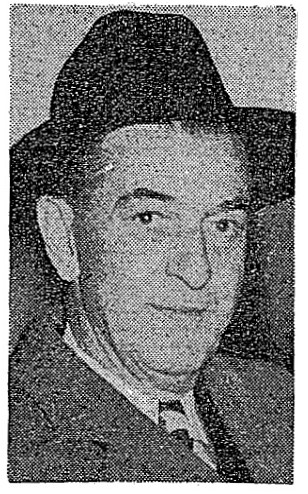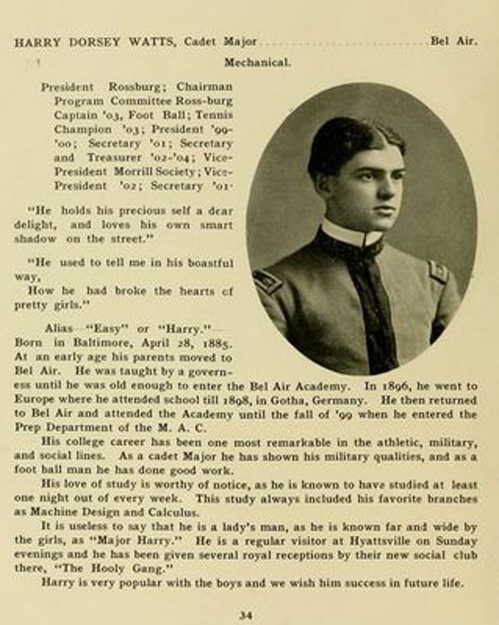


Framed or unframed, desk size to sofa size, printed by us in Arizona and Alabama since 2007. Explore now.
Shorpy is funded by you. Patreon contributors get an ad-free experience.
Learn more.

- What a headache!
- Baldwin 62303
- Baldwin VO-1000
- Cold
- No expense spared
- Tough Guys
- Lost in Toyland
- And without gloves
- If I were a blindfolded time traveler
- Smoke Consumer Also Cooks
- Oh that stove!
- Possibly still there?
- What?!?
- $100 Reward
- Freeze Frame
- Texas Flyer wanted
- Just a Year Too Soon
- WWII -- Replacing men with women at the railroad crossing.
- Yes, Icing
- You kids drive me nuts!
- NOT An Easy Job
- I wonder
- Just add window boxes
- Icing Platform?
- Indiana Harbor Belt abides
- Freezing haze
- Corrections (for those who care)
- C&NW at Nelson
- Fallen Flags
- A dangerous job made worse
Print Emporium
Man of Letter: 1904

1904. Washington, D.C. "H.D. Watts, 6th Street." Proud alumnus of Maryland Agricultural College. 5x7 inch glass negative from the C.M. Bell portrait studio. View full size.
Time for an upgrade?
Surely, Mr. Watts deserves elevation to the Handsome Rakes category here on Shorpy. He's 116 years overdue, by my estimation.
One more thing
Inspired by Zcarstvnz's research, I thought that Yawkey isn't a very common name, and wondered if Elsie might be related to Tom Yawkey, for many years the owner of the Boston Red Sox. And I found the following:
From the Reno Evening Gazette, Nov 14, 1944, p. 6
Red Sox Owner Divorced Here
Elsie Sparrow Yawkey Monday divorced Thomas A. Yawkey, millionaire owner of the Boston Red Sox.
All this inspired by one Shorpy photo. Thanks, Shorpy.
Decorated Constructionist
The New York Times
July 28, 1952
Harry Watts Dies; A Building Leader
Ex-President and Chairman of James Stewart & Co. Won the Navy's Service Emblem.
Southampton, L. I., July 27 -- Harry Dorsey Watts of 1 East End Avenue, New York, and East Hampton, former president and chairman of the board of James Stewart & Co., contractors of New York, died today in Southampton Hospital after a brief illness. His age was 67.
Born in Baltimore, the son of John H. C. and Mary Dorsey Mitchell Watts, he was a descendant of Col. Harry Dorsey, first Secretary of the State of Maryland.
After being graduated in 1904 from the University of Maryland, he began his career as a time-keeper and engineer with Wells Brothers Company, later becoming vice president. From 1915 to 1923 he headed the H. D. Watts Company.
Mr. Watts joined the Stewart construction concern in 1924, beginning as manager of the southern territory and assistant to the president. He became vice president in 1926, executive vice president in 1937 and president in 1940. He served as president and chairman of the board from 1942 until his retirement in 1946.
The Stewart concern participated in the construction of many notable buildings, including the United States Chamber of Commerce, Department of Labor and Home Owners Loan buildings in Washington, D. C.; the United States Court House, New York Postoffice, Federal Building, New York Central Building and 60 Wall Tower, all in New York; Union Station in Cincinnati, the Trinidad Naval Air base and the Republic Steel plant in Chicago. It also worked on the West Side Express Highway in New York.
Mr. Watts received the Navy's Meritorious Civilian Service Emblem. He had been president and director of One East End Avenue Corporation.
He had been a member of the United States Chamber of Commerce, the West Side Chamber of Commerce in New York and Sigma Alpha Epsilon Fraternity. His clubs had included the Deepdale, Metropolitan, Bankers, Cloud, Atlantic Beach, Devon Yacht, Seawane Country and Pilgrims, the Maryland of Baltimore, the Elkridge of Maryland, the Piedmont Driving of Atlanta and the Metropolitan of Washington.
Surviving are his widow, the former Mrs. Elsie Sparrow Yawkey; a son, Harry D., Jr.; three daughters, Mrs. Thomas Crabbe, Mrs. Harold McTigue and Mrs. Haley Fiske 2d; a brother and three sisters.
Harry's first wife, Idoline Lochrane Austell Watts, whom he had married in 1907, died in 1943. They are both buried in Woodlawn Cemetery in the Bronx, New York.

He gave his alma mater the Byrd too
In addition to Ritchie Coliseum, H.D. Watts Construction Co. also built the University of Maryland's first football stadium. It opened in 1923 and was named for Harry "Curley" Byrd, the segregationist football coach who commissioned it. That stadium became known as Old Byrd Stadium after the current stadium (now known as Maryland Stadium) was completed in 1950.
Mansard or Gambrel
Oh, the paths Shorpy takes one down.
Looking up Maryland Agricultural College took me to the wiki for University of Maryland. There I learned that the oldest building on campus (the only unscathed survivor of The Great Fire of 1912) is Morrill Hall, built in 1898 in Second Empire architectural style. Clicking further, I learned that Second Empire was popularized in France during the reign of Napoleon III and characterized by a mansard roof similar to the gambrel roof style commonly seen in barns. "What's the difference between mansard and gambrel?" I wondered. A gambrel roof has vertical gable ends and overhangs the facade, whereas a mansard roof is hipped and usually does not overhang the facade.
Thank you H.D. Watts and Shorpy!
And future architect?
Ritchie Coliseum, home arena for the U-MD basketball and boxing teams, was built in 1931 by the H.D. Watts Construction Company, which was owned by Harry Watts, an alumnus who played as a fullback on the football team from 1901 to 1903.
An Old Liner
This was what became the University of Maryland. They were known as the Old Liners (Maryland being the Old Line State). However appropriate that name might seem in football, they became Terrapins in the 1930s because people wanted an actual mascot.
And the man in the photo is ...
Harry Dorsey Watts (b. 28 Apr 1885 in Baltimore; d. 27 Jul 1952, East Hampton, N.Y.) This is his Class of 1904 photo in uniform. ~ Stephen P. Hall

























On Shorpy:
Today’s Top 5